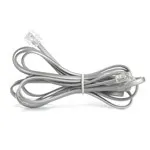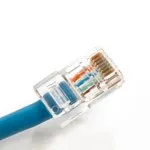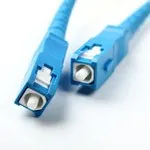Crafting Elegant Network Solutions
Category 3 or Cat3 Cable is a UTP, or untwisted pair cable, commonly used for phone system or voice communications cabling.

Category 3 Cable
The popularity of Cat3 cable as a cost-effective means of deploying voice services remains robust, since the majority of business telephones only require a single pair of wires to operate. Originally designed to carry data at up to speeds of 10Mbit/s, Cat3 has been replaced by Cat5e for higher data speed demands.

Category 5 or Cat 5e
For several years, Cat5e has been the standard for data networks. With transport speeds up to 100 Mbits/s, Cat5e cabling provides outstanding service and an affordable option for most data network infrastructures.
Cat5e Cable
Cat5e replaced Cat5 as a standard in 2001. The most common applications are 100BASE-T or "common" data networks and the increasingly popular VOIP systems. With 100Mbit/s capacity, Cat5e is the most common cable of choice used today.

Category 6 Cabling and Category 7 Cabling
Cat6 is a cable standard for gigabit Ethernet. As network administrators are pushing their networks to higher levels of performance, Cat6 is a desirable alternative to Cat5e, with speeds 10x as fast.
Cat 7 Cable
Cat 7 is a communications cable with four twisted copper pairs. While also having the same distance limitation of 90m for horizontal runs as previous copper standards, Cat7 Cable meets even more stringent specifications for both crosstalk and system noise.

Coaxial Cabling, Coax Cabling, Video Cabling
Coax or Coaxial cable is typically used for video transmission or for high speed data applications.
Coaxial Cable
Coaxial Cable by definition is a cable with both an inner conductor and outer conductor through which it carries its signal. There are a wide array of Coaxial Cable types, but the most common types used in commercial applications for video service, video surveillance, or for high speed networks include RG-6 and RG-59. For video applications, it is essential to choose a coax cable that is of the 75 ohm type. Some 50 ohm coax cables are suitable for data networks, but are not sufficient for video transmission.

Fiber Optic Cabling and Connectors
Fiber offers the top speeds and reliability that sophisticated networks require. Use fiber for high speed applications, connecting networks, MDF's to IDF's, building to building, or for cable runs over the 90m distance limitation of standard copper cables like Cat5e or Cat6.
